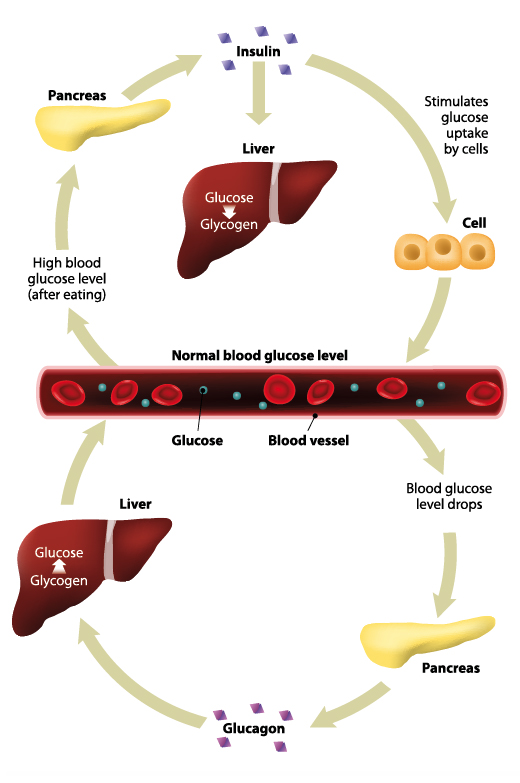Previously, this module briefly explained that the pancreas produces two hormones, which between them regulate the levels of glucose in the bloodstream. This is crucial because the body needs a certain amount of glucose in order for cells to use it as an energy source. However, too much glucose in the bloodstream can cause diabetes – a lifelong condition that needs careful management and can have an impact on many different areas of someone’s life.

After eating a meal, carbohydrates in the diet are broken down into glucose – the body’s main source of energy. However, not all of the glucose is needed at once, so the pancreas releases the hormone insulin, which causes some of the glucose to be taken in by the cells and the rest stored in the liver as glycogen or, if levels are very high, as fat. Some time after eating, when the amount of glucose in the blood has fallen, the pancreas releases the hormone glucagon. This, in turn, causes the liver to convert glycogen back into glucose, which passes into the bloodstream where it can be taken up by cells as needed.
Some people don’t produce enough insulin. This is a form of diabetes and means that blood glucose levels can rise to the point that the kidneys start excreting it in the urine. Glucose pulls water with it, and hence the first signs of diabetes tend to be increased urination and thirst. Because glucose is being excreted, it means that not enough gets to the cells and so they switch to an alternative source of energy such as fat and protein. When these substances are broken down, they produce chemicals called ketones, which start to lower the pH of the blood – this is known as ketosis. This can reach dangerous levels, a condition called ketoacidosis, and lead to coma and death.
